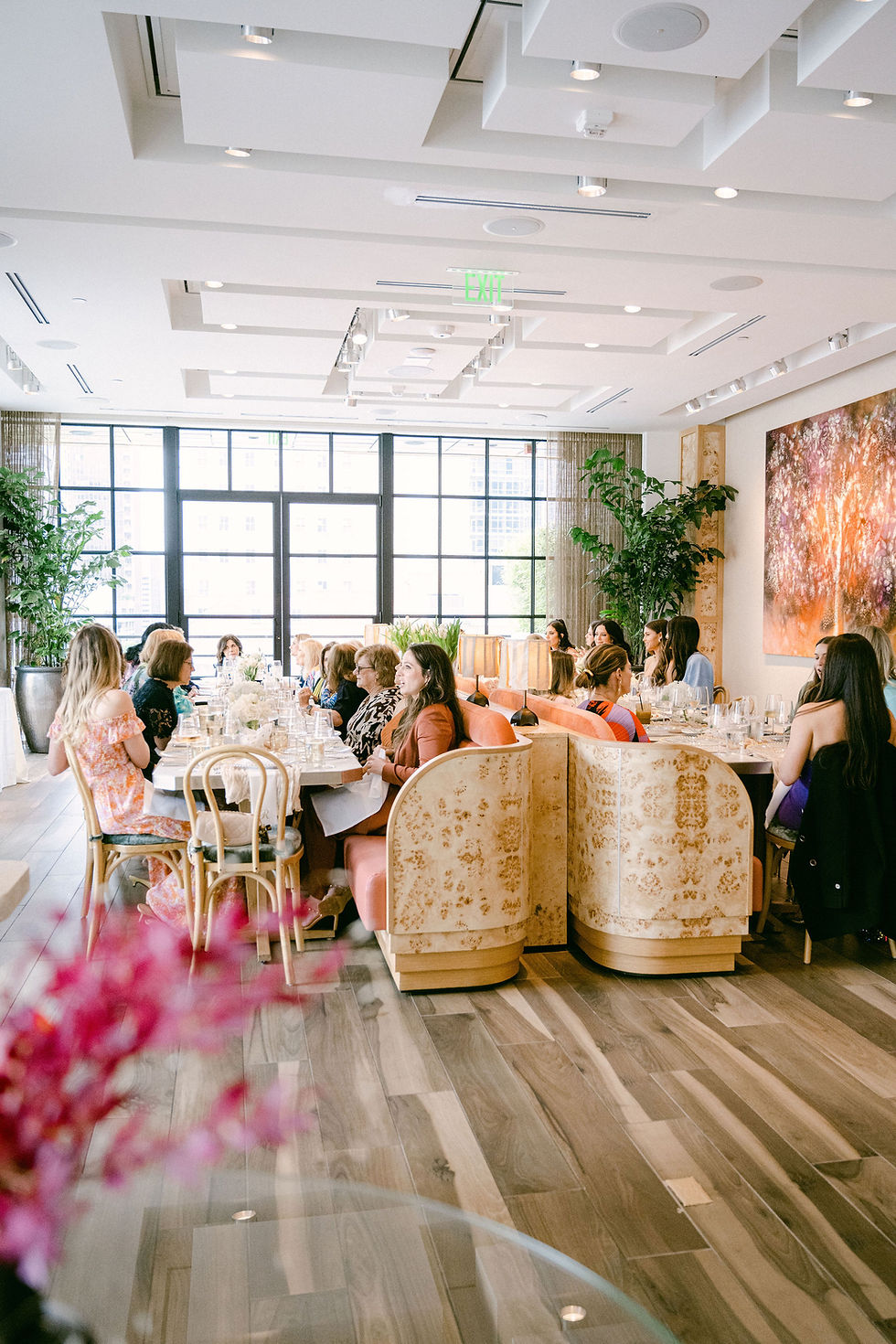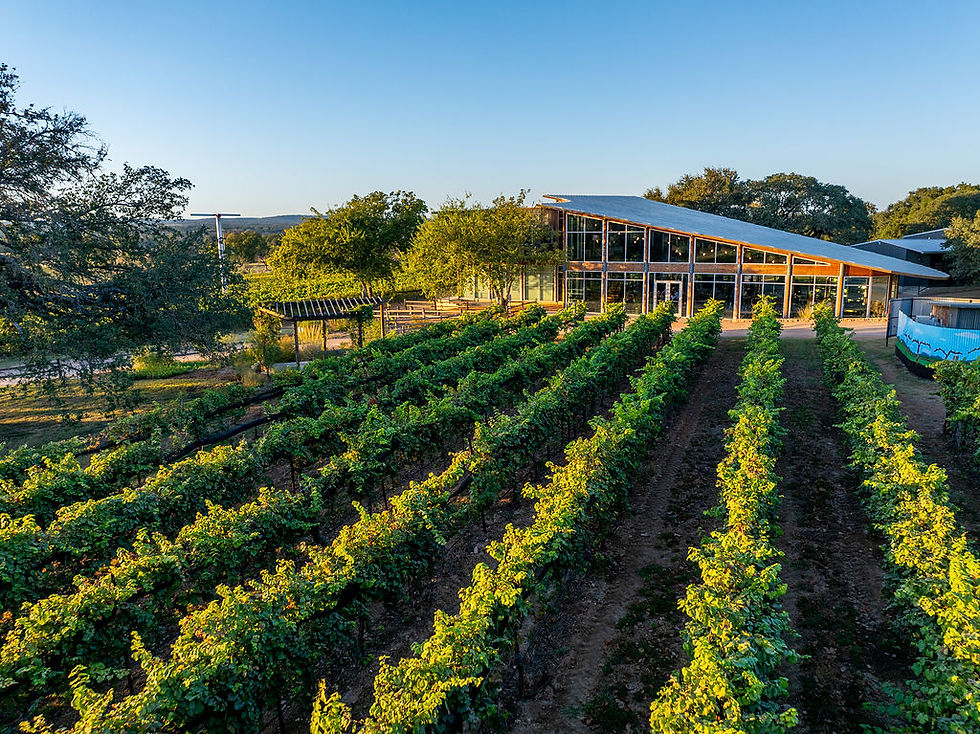THE STARTUP - STARTING FROM NOTHING IN MASON WINEMAKING
- andychalk
- Jul 31, 2022
- 5 min read
DAN MCLAUGHLIN IGNORED CONVENTIONAL WISDOM, AND EVENTUALLY WON RESPECT

by Andrew Chalk
Dan McLaughlin could have stayed in his comfortable, air-conditioned life in the Texas tech industry in Austin. However, a compelling pull to be a farmer drew him into farming vines and subsequently winemaking.
Grape growing began in 2011 when he went to The Vineyard at Florence (technically just north of the Hill Country). The developers saw it as an upscale housing development targeted at Austin tech. executives and retirees who would rather have their home in a vineyard than the more common amenity, a golf course. Dan Gatlin was the winemaker there and the first winemaker Dan had met. He loved the job. Only bird-netting was a pain. Overall, he describes the experience as ‘frickin’ awesome’.
His path crossed with Bill Blackmon, the world’s most low-key winegrower and the ‘William’ in William Chris Vineyards, and David Kuhlken, winemaker at Pedernales Cellars. They have been informal advisors and Bill, in particular, something of a consigliere over the years.
In 2012 he and wife Jeanie started to look for land using a realtor for advice. His wife was dead set against it. It seemed so remote to Georgetown where they had a daughter in high school and a son in junior high. They went first to US-290 between Johnson City and Fredericksburg because that is where they saw vineyards and wineries. They did not know anything about wine, vineyards, “or that most of the vines we saw on 290 were only show vineyards for the ambiance of the winery, not growing grapes to make wine”, says Jeanie. When the realtor realized they only wanted to farm, she quickly said they needed to go to Mason as that was the best place to grow grapes. “I immediately stopped looking at land and school districts in Johnson City and Fredericksburg and started researching Mason” says Jeanie. Blackmon and others also said Mason was the place to grow. It was Jeanie who first found and forwarded information about the Robert Clay Vineyard being for sale.
Dan went to see it and met owner and founder Paul Buist and his wife Nancy. They had planted it in 1999-2000 and put in 15 acres. Paul had contracted cancer and he had not left the house in two years, so they were forced to sell. It was after a period of five years during which the vines had not been pruned or sprayed. Bill Blackmon’s advice was “’doze it”.
Dan, naively, thought he would work the existing vines to test drive farming, and see if he liked it. He had next to no appreciation for the decrepit state to which the vineyard had fallen. He came up with an innovative offer on the spot. He offered to work the vineyard using his labor, tools, and supplies and, if it appeared he could turn it around, he would buy it from Buist at a pre-agreed price. Buist asked him how much he was going to pay to lease it while he worked it. When McLaughlin said ‘nothing’ Buist turned him down flat, and in tones that lacked ambiguity.
McLaughlin continued his search. Two weeks later, he got a call from Buist to accept his deal and McLaughlin’s path into vineyard ownership was sealed. He set up a trailer and lived in that when he was at the vineyard while commuting midweek from the family home and his day job.
Blackmon said if the McLaughlin’s weren't going to bulldoze the vineyard and start fresh they needed to cut back 2 rows to the graft union and see how they did. Those 2 rows did not produce any fruit that year, but they did grow like mad and proved that they could cut everything back to the graft and the vines would grow back fast and healthy. They would only lose one year of crop during the regrowth and training.
Using this plan, Mc Laughlin pulled out truckloads of deadwood in order to get two producing rows. Local growers Drew Tallent and Robb Parr became regular advisors.
The work was backbreaking and the results were a lousy three tons of grapes from the 2012 vintage. This, from a vineyard that used to produce 40 tons. This was a ‘come to Jesus’ moment. The McLaughlins had to move the family out to the vineyard and work it full time, or cut bait and do something else. They bought a house in Mason and moved there on December 27th, 2012.
In two years he learned all the things not to do. Like cutting back and not putting in grow tubes. There were 16,000 vines to deal with. Looking at the abundant crop on the two rows he had cut back in 2012 kept his spirits up.
By 2014, yield was up to 22 tons. By 2016 he added five more acres, bringing total plantings to 20 acres and 11 varietals. Examples are ruby cabernet, syrah, chardonnay, grenache, mourvedre, cabernet sauvignon, and merlot. He was also getting high praise from Bill Blackmon. He still does his own vineyard work, though nowadays in collaboration with his son.
Drew Tallent’s advice was that he did not need a winemaker, grow great fruit and the wines take care of themselves. He now makes 5-8 barrels of wine, or about 140-222 cases. He helped Rob Nida, who brought experience from three continents and local knowhow from working at Parr Vineyards, in order to learn winemaking. Blackmon and his partner at William Chris, Chris Brundrett, also advised on winemaking. Despite his IT savvy he did not take online UC Davis or Texas Tech. courses, rather preferring to use Google. Dan had also become friends with quite a few winemakers in the industry and was able to ask them questions and bounce ideas off them. Among that group were Chris Brundrett, David Kuhlken, Lewis Dixon (La Cruz de Comal Wines), Tony Cuturri (Coturri Winery), Deirdre Heekin of Vermont and Maureen Qualia. Maureen lives in Mason and has her lab in the McLaughlin’s building.

He reminds me of Dan Gatlin in the singularity of his objectives “I want the best wine possible” and he is committed to what he calls slow winemaking techniques. 2015 was his first vintage and he bottled only 15 tons of grapes. He ages wines two or three years in wood without any qualms. Bottles sell when they are ready to drink for whatever they cost to make and can be over $130. For his port, he first used the grapes to make the brandy to be used to fortify it. For the wine, the 2020 grapes were left hanging until November (normal Hill Country harvest is in August) and when harvested they were ‘like raisins’.

He has never been to Napa and, although his favorite grape from Mason is merlot, he has never tasted the great merlots of Bordeaux’s right bank, considered the best examples in the world. This is something I took him to task on. If he wants to get the best from the grape, he has to know the art of the possible. Château Pétrus, 100% merlot, and the most expensive wine in Bordeaux, might just reveal a thing or two. Château Ausone and Château Cheval Blanc may show possibilities in blending with cabernet franc. In California, Duckhorn’s ‘Three Palms Vineyard’ might reveal New World possibilities with the grape. Italy and Australia also have impressive merlot wines.
Robert Clay Vineyards opened a tasting room in Mason in 2021. Since their approach to aging reds is to sell them when they are ready to drink quantities are still being built up. After all the hard work, McLaughlin thanks Bill Blackmon for suggesting Mason. It was a good choice.






Comments